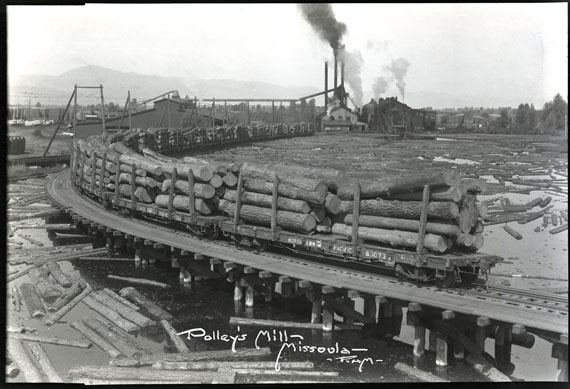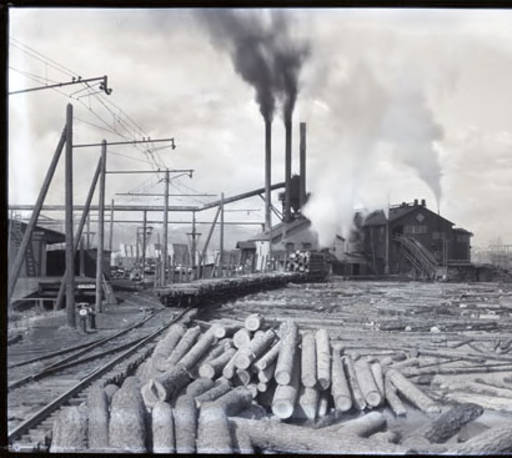History of Old Sawmill District Site

VITAL HISTORY. PROMISING FUTURE.
Home to a working mill for nearly a century, the mill site had its share of conditions that required careful environmental assessment and cleanup. The result is a site that makes Old Sawmill District not a just a vital place to live and work, but also a healthy and safe neighborhood alongside one of Missoula’s prettiest stretches of river.
A Rich History
Looking at the Clark Fork River today, we Missoulians often forget that long ago logs were floated, lumber was processed and truck beds were manufactured—all in the heart of town. The 46-acre mill site was an integral part of Missoula’s commerce and growth, until it was finally vacated in the early ’90s. Brownfield status from the Environmental Protection Agency (EPA) marked the mill site as a prime candidate for a public-private partnership to renew the site into homes, shops, offices and a 14-acre city park.
The Voluntary Cleanup Plan
After a thorough environmental assessment, a time-tested solution to the physical effects of the mill site’s long industrial history was planned: the Voluntary Cleanup Plan, or VCP. This plan, developed in coordination with the Montana Department of Environmental Quality (DEQ), called for the removal and disposal of the site’s contaminated soils and wood waste. Work under that plan has been completed and the mill site is undergoing its long-awaited renewal.
Reuse and Renewal
Nearly all of the materials that had to be removed from the mill site were salvaged for other uses. 15,000 tons of wood waste was removed composted and reused in city parks. Old concrete foundations were dug out and crushed, then used to fill excavated log ponds along with other fill material from the site. Abandoned buildings were deconstructed and some materials were used to build shelters in Silver Park.
A Cooperative Effort
GRASSROOTS EFFORT SPROUTS DISTRICT REVITALIZATION.
The enthusiastic involvement of many different Missoula entities has long been a core ethic of Old Sawmill District. We knew total community involvement was vital for a project that will soon command a central presence in the Missoula Community. This collaborative work started more than 15 years ago and included the development team, local citizens, city officials, DEQ, and the EPA.
Public Involvement

A well-planned public participation process was key to achieving a unified vision for the site, which we initiated at both the neighborhood and community levels. During public open houses and neighborhood council meetings, interested neighbors and citizens reviewed our conceptual plans, asked questions and offered their suggestions—and we altered our concepts and plans accordingly.
City Agencies
We’ve also worked closely with Missoula’s police, fire and public works personnel, who suggested important improvements to the design.
The City of Missoula and Missoula Redevelopment Agency
Also critical in planning Old Sawmill District was the involvement of the City of Missoula and the Missoula Redevelopment Agency. The result is a plan in which nearly every detail has been expertly scrutinized to fit the Missoula community’s needs and values.

